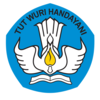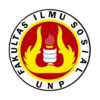Online Submissions
Already have a Username/Password for The 1st International Conference on ESAC?
Go to Login
Need a Username/Password?
Go to Registration
Registration and login are required to submit items online and to check the status of current submissions.
Author Guidelines
ICESAC Author Guideline
- The article must be an original piece of work, has novelty thought and significant impact to Education, Sociology, Anthropology and Communication, and also has not be published or not being submitted to publish on another journal.
- The article can be written in English.
- The article may form of research findings and review of theories or methodology.
- The number of the words in the article around 5.500 words and must not more than 7.000 words. Entries must be in 12-point Times New Roman and single spaced.
- Abstract should be typed in English and Indonesian Language.
- The abstract ranged 200 - 250 words and contains of one paragraph only which describes the essence of the entire content of the article clearly and completely. Entries must be in 11-point Times New Roman and single spaced. Please include 3 to 5 words of the key words.
- Journal article should be sent through OCS (Open Conference System) by this website. Author(s) needs to register online by creating an account (username & password on this website before uploading article, to create an account (username & password on this website).
- Reference and citations in the text should be written by using Mendeley Manager References in APA (American Psychological Associations) 6 th style
THE GUIDELINES FOR THE MANUSCRIPT BODY TEXT
PARTS OF MANUSCRIPT
The manuscript must consist of these aspects:
- Front Matter : title, authors, affiliations and contacts, abstract
- Research and Discussion : introduction, methods, results and discussion, conclusion
- Back Matter : appendices or supplementary materials (if any), acknowledgment (if any), declaration of conflict of interest (if any), references
A. FRONT MATTER
Title
- The Title of article reflects the main topics of article. It must be coherent, straightforward, and contain the main variables of the research.
- The title no more than 14 words for Indonesian Language.
Authors, Affiliations And Contacts
The order of name may vary depending on agreement among authors (in the case of multiple authorship). The names are written in the order of first name and surname. If there is no surname provided, the first name maybe repeated. All affiliations must start with the working unit within a university or institution (if any), then followed by the name of the faculty, university, city and country. At least one author is assigned to be the corresponding author in which their email address should be provided. All authors should be accompanied address, including the name of the institution, email address, and phone number.
Abstract:
- The abstract is summary of the articles
- The abstract should be written in around 200-300 words in a single space.
- The abstract should be typed as concise as possible and should be composed of problem statement, method, scientific finding results, and a short conclusion.
- The abstract should tell the prospective reader what you did and highlight the key findings. Avoid using technical jargon and uncommon abbreviations. Use words which reflect the precise meaning, Cites no references.
B. RESEARCH DISCUSSION
Introduction:
- The introduction must contain (shortly and consecutively) a general background and a literature review (state of the art) as the basis of the brand new research question, research novelty, main research problems, and the hypothesis.
- In the final part of the introduction, the purpose of the article writing should be stated.
- In the scientific article format, it does not allow to write down the references as in the research report. They should be represented in the literature review to show the brand new of the scientific article.
- The content of introduction is problem background, hypothesis (if any), significant idea to distinguish with the same issue has been published and purpose of research.
Research Method:
- The method is implemented to solve problems, including analytic methods.
- The methods used in the problem solving of the research are explained in this part.
- This section should explain the approach/type of research, details of data collection techniques, number of informants/respondents, and data analysis techniques. The method does not only contain the theory/expert opinion but the concrete steps of the research carried out
Result And Discussion:
- This part consists of the research results and how they are discussed.
- The results obtained from the research have to be supported by sufficient data.
- The research results and the discovery must be the answers or the research hypothesis stated previously in the introduction part.
- The results of the study are supported by data, specifically for qualitative research, it is recommended to include interview quotes as data reinforcement/findings
- The outcome of the research is explicitly described with critical opinion and interpretation from the researchers and experts involved. If necessary, comparison of result from other researches in similar field is provided as well. In this section, more elaborate results and discussions in the form of data analysis are provided with field documentation such as photos or software-generated images, tables, figures, or statistics.
Conclusion:
- It is the final part containing conclusions and advice.
- The conclusions will be the answers to assumption or hypothesis, the research purposes, and the research discoveries.
- The conclusions should not contain only the repetition of the results and discussions. It should be the summary of the research results as the author expects in the research purposes or the hypothesis
- If necessary, this may also include the possibility of further research plan as well
C. BACK MATTER
References:
- All the references that used in the article must be listed in this part.
- All the used references must be taken from primary sources (80% out of 100 % references is scientific journals)
- These scientific journals published in the last ten years.
- Each article should have at least 15 references.
- The citations and bibliography style using American Psychological Association (APA) 6 th style (Mendeley)
Acknowledgment
Authors may elaborate this section by providing information regarding their source of funding, the people or organization that assist research procedure, and if any, the promoter of research who provide translation, proofreading, additional expert opinion and support prior to publication on the conference.
Conflict of Interest
Prior to the publication on the conference, all manuscripts must declare any circumstances or situations that may insinuate conflict of interest which can imposed to possible academic or legal dispute. If there no conflict of interest, simply state so in brevity.
Submission Preparation Checklist
- The submission has not been previously published, nor is it before another conference for consideration (or an explanation has been provided in Comments to the Director).
- The submission file is in OpenOffice, Microsoft Word, RTF, or WordPerfect document file format.
- All URL addresses in the text (e.g., http://icesac.fis.unp.ac.id) are activated and ready to click.
- The text is single-spaced; uses a 12-point font; employs italics, rather than underlining (except with URL addresses); and all illustrations, figures, and tables are placed within the text at the appropriate points, rather than at the end.
- The text adheres to the stylistic and bibliographic requirements outlined in the Author Guidelines, which is found in About the Conference.
- If submitting to a peer-reviewed track of the conference, authors' names are removed from submission, with "Author" and year used in the bibliography and footnotes, instead of authors' name, paper title, etc.
- If submitting to peer review, all Microsoft Office documents (including Supplementary Files) have been saved by going to File and selecting Save As; clicking Tools (or Options in a Mac); clicking Security; selecting "Remove personal information from file properties on save"; clicking Save.
Copyright Notice
Authors who submit to this conference agree to the following terms:
a) Authors retain copyright over their work, while allowing the conference to place this unpublished work under a Creative Commons Attribution License, which allows others to freely access, use, and share the work, with an acknowledgement of the work's authorship and its initial presentation at this conference.
b) Authors are able to waive the terms of the CC license and enter into separate, additional contractual arrangements for the non-exclusive distribution and subsequent publication of this work (e.g., publish a revised version in a journal, post it to an institutional repository or publish it in a book), with an acknowledgement of its initial presentation at this conference.
c) In addition, authors are encouraged to post and share their work online (e.g., in institutional repositories or on their website) at any point before and after the conference.
Privacy Statement
The names and email addresses entered in this conference site will be used exclusively for the stated purposes of this conference and will not be made available for any other purpose or to any other party.

This work is licensed under a
Creative Commons Attribution 3.0 License.
ICESAC
Department of Sociology. Social Science Faculty. Universitas Negeri Padang. 2022
Supported By:

.png)



.png)



